[simple-author-box]
Preamble:
This raga Rudrapriya as listed in the Sangeetha Sampradaya Pradarshini (“SSP”) which we take up in this blog post along with the compositions available to us, would confound any student or practitioner of music when viewed against the available musicological texts and musicological history. The objective of this blog post is to evaluate the material available to us and seek a plausible explanation for the confusing or contradictory aspects. This raga belonging to the mela varga or the clan of ragas under Mela 22 Sriraga, is a raga of late 18th century vintage (post 1750 AD), as it is not seen in the prior musicological texts, such as those of Shahaji or Tulaja.
Overview of Rudrapriya:
In the modern musical parlance, the raga Rudrapriya is an upanga janya under Mela 22 Sriraga, taking all the 7 notes in the arohana lineally while dropping the dhaivata note in the avarohana.
Arohana krama/murcchana: S R2 G2 M1 P D2 N2 S
Avarohana krama/murcchana: S N2 P M1 G2 R2 S
Simple as the definition may sound, yet the raga plays hosts to a number of unique features beyond what is conveyed by the above skeletal definition, which is also the source of confusion for us. We will start the exercise of dissecting the raga, from the commentary provided by Subbarama Dikshitar in the SSP and the exemplar compositions provided thereunder.
The SSP’s take on Rudrapriya:
According to Subbarama Dikshitar:
- The raga is bhashanga
- It is sampurna with dhaivatha being varjya in the avarohana
- Sadja is the graha svara of the raga
- It is a desya raga
- The raga can be sung at all times
- Nishadha is a key note of the raga, identified by the dheergha note in the arohana krama and the Janta combination with which it occurs in the avarohana
- Rishabha and gandhara are the other jiva and nyasa svaras
A brief evaluation of the above commentary in the modern context is required for us to understand the raga and let us taken them up seriatim.
- Though Subbarama Dikshitar says that the raga is bhashanga, it is not so in the modern sense. As pointed out earlier in our other blog posts, such as the one on Gopikavasanta raga, a proper reading of the SSP as a whole would show that Subbarama Dikshitar has presented the term “bhashanga” in its older sense, when ragas were classified as upanga, bhashanga and kriyanga ragas on an entirely different aspect. The perusal of the Lakshya Gitam of Sriraga, the parent raga of the 22nd Mela varga in the SSP would show that Sriranjani, Madhyamavati and Devamanohari are also shown as bhashanga janya ragas of the mela (22), which we know, they are not, in the modern sense. Today we call a raga bhashanga if it takes a note which is foreign to the parent scale. Rudrapriya does not take any note from outside the notes of Mela 22 so is upanga in the modern sense.
- In the context of the SSP, it has to be pointed out that Rudrapriya is not mentioned in the Sriraga lakshya gitam either as a upanga or a bhashanga janya thereunder. Suffice to state that the raga must have been inducted into the Anubandha listing (to the Catur Dandi Prakashika probably authored by Muddu Venkatamakhin) much later in time.
- Curiously
as a foot note at the very end of the last composition provided as the
exemplar, Subbarama Dikshitar makes a mention that the prayoga M1G2M1
in certain places is rendered as M1G3M1 which is called as
Hindustani Kapi. Without wading into this controversial point at this juncture
as to the usage of G3/antara gandhara alluded to by Subbarama Dikshitar and
confining ourselves to Rudrapriya alone, we can safely conclude the following
points:
- In none of the exemplar compositions that Subbarama Dikshitar cites in the SSP, does MG3M occur or is so notated.
- The usage of G3 may have been seen by Subbarama Dikshitar during his times but was not an intrinsic part of the sastraic definition of Rudrapriya.
- Rudrapriya for us today therefore is a upanga janya under Mela 22 taking no foreign notes.
- Next, Subbarama Dikshitar says that the raga is sampurna. What it meant in the older context was that taking together both arohana and avarohana krama all the seven notes occurred in the raga. And given that dhaivatha was varjya in the avarohana, Subbarama Dikshitar rightly provides his summary so. From a practical perspective thus the musical motif SN2P becomes defining to mark out this raga. Further since D2 is said to be varjya, or avoided in the avarohana, the phrase SN2D2N3P should not occur in the raga.
- Subbarama Dikshitar’s reference to sadja being the graha svara of the raga is superfluous for us today, for even by the late 18th Century ragas had adopted the sadja note only as the graha svara. The erstwhile architectural construct of svaras other than sadja, being graha or the commencement/basal note had long been superseded/deprecated.
- According to Subbarama Dikshitar, Rudrapriya is a desya raga. The concept of desi/desya ragas as referred to by him relates to the aspect of the origin of the raga. Ragas were classed as Ghana, Naya and Desi right from the days of Shahaji (circa 1700). A century before Shahaji, Venkatamakhin (circa 1620 AD) in his trail blazing ‘Caturdandi Prakashika’ is seen using the term ‘desi raga’ and identifies Kalyani and Pantuvarali/Ramakriya as desi. Venkatamakhin uses the term “turuska”, meaning Turkish or a Moslem import into Indian music. Though the practice of classifying ragas as ghana, naya and desya had gone out of vogue, still in the SSP, Subbarama Dikshitar has in his commentary of the ragas called out certain ragas as desya ragas- for example Pharaz, Nayaki etc. These so called ‘auttara’ or foreign origin ragas probably imported into our Music from the North were nevertheless seen as ranjaka or pleasing to the ear and hence came to be accepted along with the other established and ordained ragas, by the cognoscenti.
- Again, Subbarama Dikshitar’s description that Rudrapriya is a raga which can be sung at all times of the day, relates to a concept which has long since died out in our system of music. As we saw in prior blog posts, SSP still latches on to this concept of ragas and the time of the day in which they are to be rendered, for instance the raga Ahiri is supposed to be sung in the first quarter of the night ( bhANa yAmE pragIyatE). Again, suffice to say that this concept of singing a raga at the anointed time has long since gone out of vogue.
- Next according to Subbarama Dikshitar, the janta nishadha is a unique feature of the raga which is reinforced in the arohana/avarohana murchana krama that he provides. It is janta in the arohana krama and dheergha in the avarohana krama.
- This apart Subbarama Dikshitar also identifies gandhara (dhirgha) and rishabha as preferred jeeva and nyasa svaras. We can see the import of these when we discuss the exemplar kritis in the sections to follow.
In sum, the Rudpriya of the SSP goes as under:
- It is an upanga janya raga under mela 22.
- It is sampurna in the arohana and devoid of dhaivatha in the avarohana krama.
- Janta Nishadha, dirgha nishadha and gandhara are the hallmarks of this raga with rishabha figuring as a preferred jiva and nyasa note.
Though Subbarama Dikshitar does not specify unique motifs for the raga, nevertheless we will endeavour to identify them when we study some of the exemplar kritis later on in this blog post.
Exemplar Kritis in the SSP:
Apart from providing the lakshana of the raga, Subbarama Dikshitar lists out the following compositions for us in the SSP as illustrating Rudrapriya:
- “Rudra Kopa Jaatha Veerabadhram Ashyraye” of Muthusvami Dikshitar in rupaka tala, composed on Lord Veerabadhra, the Lord of the Shiva Ganas and considered an aspect of Lord Shiva Himself in the Hindu mythology.
- “Vallideva Senapathi” of Balasvami Dikshitar in Rupaka tala, a composition in Telugu propitiating Lord Subramanya at Kazhugumalai (or Kazhugachalam or Grudhra Giri) wherein he seeks the Lord’s benign blessings for his Royal patron Kumara Ettendra. It may be pointed out here that the Lord at Kazhughachalam/Kazhughumalai was the presiding deity of the Ettayapuram Royals who were the patrons of the Dikshitars.
- “Neeve rasikashikamani” a daru (ode) again of Balasvami Dikshitar in Adi tala on his Royal patron Venkatesvara Ettappa, the then Ruler of Ettayapuram.
- “Amba paradevate” of Krishnasvami Ayya in matya capu tala
- “Muruga Unnai nambinen ayya” a composition by Venkatesvara Ettappa, again on the Lord at Kazhugachalam
- His own sancari in matya tala.
While this is the listing from the main SSP, in the Anubandha, Subbarama Dikshitar lists out two more compositions in this raga attributing the same to Muthusvami Dikshitar:
- The first being a kriti on Lord Ganesha, “Gananayakam Bhajeham” in Adi tala. It is the notation of this kriti and the extant versions of the same which causes considerable confusion to a discerning listener of music, which we will deal with in the relevant discography section.
- The second is “Tyagesam Bhajare” again in Adi tala.
Outside the ken of the SSP, from amongst the lot of kritis which came to be published by Veenai Sundaram Iyer purportedly from out of the palm leaf manuscripts of Ambi Dikshitar, the son of Subbarama Dikshitar, we have three kritis attributed to Muthusvami Dikshitar, available to us:
- “Tyagarajasya Bhaktobhavami” (misra capu tala) as part of the set of vibakti kritis on Lord Tyagaraja of Tiruvarur
- “Sivakayarohanesaya” in Rupaka tala
- “Parasaktim” in Adi tala
While we take up a few key individual compositions for analysis, we will also briefly look at the other collateral aspects of the composition and its subject matter to bolster our understanding and also enhance our appreciation of the raga and the composition, in unison.
“Rudra Kopa Jaatha” of Muthusvami Dikshitar:
This kriti is on Lord Veerabadhra, considered by some as a form of Lord Shiva himself, but yet the popular mythology places the deity as having been born out of Lord Shiva’s wrath as Muthusvami Dikshitar very neatly encapsulates it in the opening pallavi of the composition. Let’s first look at the lyrics and the meaning of the composition.
pallavi
sadA – Always,
hRdaye – in (my) heart,
AshrayE – I surrender to
vIrabadhram – Lord Virabhadra,
rudra-kOpa-jAta – He whose arose from Shiva’s wrath,
anupallavi
bhadrakALI-ramaNam – the Consort of Bhadrakali,
bhava-haraNam – the remover of (the sorrows of) worldly existence,
bhadra-pradAna-nipuNa-charaNam- the one whose feet are adroit in granting prosperity,
rudrAkSha-mAlikA-bharaNam- the one ornamented with garland strung of Rudraksha beads,
kShudra-Adi-nivAraNam- the preventer of petty or cruel effects,
bhakta-bharaNam – the supporter of devotees,
caraNam
vijita-vidhi-hari-hari-hayam – the one who subdued Brahma, Vishnu and Indra (who has golden horses),
vira-adhi-vIram – the bravest of the brave,
abhayam – the fearless one,
rajata-parvata-Ashayam – the one residing in the silver hued mountain, Kailasa,
ravi-vidhu-tEjOmayam – the one who embodies the sun, moon and fire,
gaja-mukha-gaNEsha raksham – the protector of the elephant-faced Ganesha,
aja-vadana-daksha-shiksham – the one who taught a lesson to the goat-faced Daksha,
nija-rUpa-dAna-daksham – the adept at granting knowledge of one’s real self,
nija-guruguha-svapakShststayiam – the one who has his preceptor Guruguha on his side.
The composition encapsulates the portion of the story of Sati or Dakshayani, Daksha’s (son of Lord Brahma) daughter who married Lord Shiva, much against Daksha’s objections. When She attempted to seek the rightful share of the sacrificial offering (haavis) in the yajna that her father conducted, without duly inviting Lord Shiva, Daksha insulted her & Lord Shiva and thereupon Sati immolated herself. It was at this juncture Lord Shiva upon hearing the fate of Sati, was subsumed by anger at Daksha. And in wrath he plucked the locks of his matted hair and split them into two. From one rose Lord Veerabadhra or Aghora Veerabadhra and from the other, his consort Goddess Mahakali appeared. Lord Shiva bade them to go and destroy Daksha’s sacrifice in divine retribution for the sacrilege that he had committed. When Lord Veerabadhra leading Shiva’s bhutaganas, descended on the place where Daksha was conducting his yajna, a great war ensued between them and the Gods including Lord Brahma, Lord Vishnu and Indra on Daksha’s side. Lord Veerabadhra defeated the Gods and exacted revenge by slaying Daksha. When Lord Shiva was thereafter duly propitiated by the Gods, he condescended and revived Daksha by fixing a goat’s head on his decapitated torso. Sati was thereafter reborn as Parvati (daughter of Himavan) and she duly reunited with Lord Shiva. The esoteric worship of Lord Veerabadhra and the related mantras propitiating him can be accessed here.
Muthusvami Dikshitar adroitly weaves this puranic lore dealing with Lord Veerabadhra in this composition by the following lyrics:
rudra kOpa jAta, – Veerabadhra being born out of Lord Shiva’s wrath
Bhadra-kAli-ramanam – Veerabadhra being the consort of Bhadra Kali.
Vijita-vidhi-hari-hari hayam – In the war that took place between Veerabadhra and Daksha’s forces, Veerbadhra vanquishing Lord Brahma, Lord Vishnu and Indra
Rajata-parvata-Ashryam – As a Commander of Lord Shiva’s Ganas, Veerabadhra being a resident of Mount Kailasa, referred to as a silver hued mountain
aja-vadana-dakSha-sikShaM. – Veerabadhra by slaying Daksha for his act of sacrilege thus teaching him a lesson.
As is his wont, in the body of the composition, Dikshitar weaves in part, the raga mudra and his colophon ‘guruguha’ in the lyrics, even while keeping his date with prasa concordance. It has to be mentioned that the lyrics provides no specific stala/ksetra reference as the abode of the deity.
The notation of the composition in the SSP would show the following for us:
- SRGM, SGRGM, SGRS (especially in tara stayi) forms the alternative progression of the raga on the purvanga. Actually, SRG is not seen in tara stayi and almost as a rule only SGR is seen.
- In the uttaranga, PDNS in the madhya stayi and MPNS in the mandhara stayi, (for example the notation of the lyric “abhayam” in the caranam) are the prayogas seen. It has to be noted that both PDNS and PNS are thus used in the composition with the caveat that PDNS figures in the madhya stayi and PNS in the mandhara stayi.
- The foregoing would clearly show that the raga conforms to the 18th Century raga architecture whereby different/multiple progressions in purvanga-uttaranga are taken in the madhya and mandhara stayi.
- PDNPM, NgrsNP and sgrsNP along with MGM are recurring motifs with rishabha being a preferred phrase ending note.
- Janta nishadha and kampita gandhara are seen used. In fact,the NNsNPM can be anointed as the leitmotif of the raga (the lower case sadja being the tara sadja note). However, this specific murccana is not found explicitly in this composition, though.
- In terms of octaval traversal, the kriti stretches from mandhara madhyama to tara madhyama.
- As always Dikshitar unveils his conception of the raga with its delectable turns and twists, in the madhyama kala sahitya section starting “gajamukha”. The musical notation of this segment of the composition being the finale goes thus:
GRnS- GR.G -MM,, | PMPD – NS.R -M.GR ||
gajamukha -ganesa-raksham | ajavada-nadaksha-sIksham
NS,N – PM,, – GGRS | nSGR – MG.N – P,GR ||
nijaru-padAna-daksham | nijaguru-guhasva-paksham (Rudrakopa)
Note: Notes in lower case is mandhara stayi, upper case is madhya stayi and italics is tara stayi.
Discography:
For this composition, presented is a compact and almost close to the SSP notation, rendering of the composition by the Rudrapatnam Brothers in this Youtube audio recording with a raga vinyasa, kriti rendering followed by a few avarta of svaras.
However, the following points merit attention in the context of the rendering above:
- The raga vinyasa could have been structured with more janta nishadhas and by ending the musical phrases with rishabha note so as to remove any traces suggestive of Karaharapriya.
- The lyrical portions of the caranam being “harihayam” and “abhayam” ought to have been rendered as per SSP with the notation as RnRGM and npmpns respectively. Instead it is heard as SRGM and npdns. To that extent the fidelity to the notation of the SSP is not seen in the rendering barring which the rendering otherwise closely aligns to the SSP.
- The madhyama kala carana portion is brought out satisfactorily in accordance with the SSP notation.
There are other renderings of this composition but they do not meet the benchmark set by SSP and are at best left alone. With this we move on the next kriti.
“Gananayakam Bhajeham”
Before we embark on dissecting this composition, a brief note on some aspects of this composition merit our attention.
- This composition was published as a part of the Anubandha to the SSP by Subbarama Dikshitar attributing the same to Muthusvami Dikshitar. Some scholars cite this as an infirmity, in a sense, whether the composition was indeed Dikshitar’s and why was it that Subbarama Dikshitar made it part of the Anubandha rather than making it part of the SSP itself.
- Further in support of this point of view it is argued that:
- The eduppu or the take-off of “Gananayakam” (½ edam of the second beat of the adi tala) and it overall rhythmic format is reminiscent of the style of Tyagaraja. This feature is not seen in any kriti of Muthusvami Dikshitar and thus is stylistically alien to him.
- The melody or musical setting/mettu of this composition is uncannily similar or exactly the same as that of “Sri Manini Manohara” a composition of Tyagaraja which goes with the raga name of Poornasadjam. It has to be pointed out that the Anubandha to the SSP states that raga of ‘Gananayakam” as Rudrapriya and not Poornasadjam.
Thus, we are left holding with an issue as to the antecedents of this composition which can boiled down into the following questions:
- Is it a composition of Muthusvami Dikshitar?
- What is the raga lakshana of Rudrapriya found documented for this composition in the Anubandha to the SSP?
- Are Rudrapriya and Poornasadjam same or similar, or are they different?
We will proceed to find a satisfactory explanation for these vexing questions by adopting the following methodology:
- Analyse the composition from a lyrical and musical perspective (both with the notation found in the Anubandha and the extant renderings of the composition)
- Evaluate the composition from a musical perspective with “Rudrakopa Jaata” and ‘Sri Maanini”
- Evaluate the take of musicologists on these questions, if any and summarize our understanding.
The notation of the composition:
The Anubandha to the SSP documents the notation of “Gananayakam” ( catusra eka tala). The perusal would show a number of distinctive aspects:
- Dhaivatha is completely avoided both in the arohana and avarohana
- The kriti itself is architected with the nominal arohana/avarohana murchanas as under:
S G R G M N N S / S N P M G R S
- As if to emphasize the core raga lakshana of Rudrapriya, Nishadha note is made the pivot of the composition both the dheergha and the janta variety littering this short and exquisite piece.
- Attention is invited to stark contrast between the musical texture of “Rudra Kopa Jaatha” and “Gananayakam” especially the dropping of the dhaivatha note in both arohana & avarohana and pancama in the ascent.
Discography:
When we examine the available recordings of this composition, we have two main varieties of rendering:
- Version 1 -Rendering strictly based on the Anubandha notation eschewing dhaivatha completely in both the arohana and avrohana while pancama in avoided in the aroha phrases.
- Version 2- Rendering of the composition by normalizing the phrases to incorporate PDNS wherever MNNS occurs, throughout the composition. This would make the raga lakshana of the composition to accord with the version laid out in the main SSP of which ‘Rudrakopa Jaatha” is the exemplar.
Version 1:
In this I present the mellifluous vocalist Sangita Kalanidhi Dr M L Vasanthakumari rendering the composition fully in accordance with the Anubandha to the SSP notation. Attention is invited to the musical notes of the lyrics “dayakam” in the anupallavi, “viradham” in the carana and the svara kalpana sally on the pallavi wherein the MNNS (not PDNS) figures as the building block for her. Both “dayakam” and “viradham” are notated as MNNS in the anubandha to the SSP and she sings the same in strict accordance with the notation.
Sangita Kalanidhi D K Jayaraman of the Ambi Dikshitar sishya parampara sings in accordance with the notation found in the Anubandha:
If we surmise that this was the Ambi Dikshitar version was this how it was taught?
Version 2:
I present the rendering of the legendary Sangita Kalanidhi Dr M S Subbulakshmi who begins one of her innumerable concerts with ‘Gananayakam Bhajeham”. Attention is invited to the musical notes of the lyrics “dayakam” in the anupallavi, “viradham” in the carana and the svara kalpana sally on the pallavi wherein the PDNS figures as the building block for her. Both “dayakam” and “viradham” are notated as MNNS in the Anubandha to the SSP and NOT as PDNS as she sings.
I next present a detailed exposition by Sangita Kalacharya Dr S Rajam who too traced his patham to Ambi Dikshitar.
Attention is invited to the introduction he provides to the raga before commencing his recital. Again, if he too had learnt it from Ambi Dikshitar, why is the version of the composition is different as between him and Sri D K Jayaraman? Food for thought, one should say.
Dichotomy in the Raga Lakshana:
The discography above as evidenced by the two versions poses us with the further question whether the raga of Gananayakam is Rudrapriya, as exemplified by “Rudra Kopa Jaatha”. The raga seen in ‘Gananayakam’, being totally devoid of dhaivatha and eschewing panchama in the ascent, cannot be melodically equated to the Rudrapriya of “Rudra Kopa jaatha”. Yet Subbarama Dikshitar in his wisdom calls the raga of both the compositions as Rudrapriya.
It is in this context that the raga lakshana found in ‘Gananayakam” came to be found as being exactly like the one in Tyagaraja’s “Sri Manini” and similar to the famous ‘Lavanya Rama” which are labelled in all musical texts as being in the raga by name Poornasadjam. Without wading into the two Tyagaraja kritis, lest we deviate away from the subject matter Dikshitar kritis on hand, I refer the reader to the rendering of the two compositions by the late Vidvan Ramnad Krishnan, available in the public domain.
Which now leaves us with the question as to the difference between Rudrapriya and Poornasadjam.
Poornasadjam and Rudrapriya:
The two ragas can be compared with the available musicological records as summarized below:
| Detail | Rudrapriya | Poornasadjam |
| Musicological textual reference | Rudrapriya is found mentioned only in Muddu Venkatamakhin’s Ragalakshanam and in Subbarama Dikshitar’s SSP. No other prior musicological text talks about this raga | Poornasadjam is found documented only in Sangraha Cudamani and the later Ragalakshanamu. As reiterated in these blog posts the Sangraha Cudamani (SC) is found to be documenting the ragas of the compositions of Tyagaraja. |
| Mela of the raga | Mela 22 – Sri Raga or the equivalent heptatonic mela Karaharapriya | Mela 20 – Natabhairavi or Narabhairavi, as SC calls the Mela, the raga is seen documented in SC. |
| Arohana/ Avarohana | S R G M P D N S S N P M G R S | S P M P D P S and S N D M G R S |
| Notes varjya or vakra | Dha is omitted in the descent | Ri, Ga and Ni omitted in ascent and Pa being omitted in the descent. The sloka in the SC as well as the Ragalakshanamu are individually as well as mutually, noticed to be inconsistent |
| Exemplar Compositions we hear today | “Rudra Kopa Jaatha” of Muthuswami Dikshitar and “Amba Paradevate” by Krishnaswami Ayya | No known composition exists in this scale |
The very perusal of the authoritative musicological texts would show that the ragas going by the names of Rudrapriya (found only in Muddu Venkatamakhin’s raga compendium and the SSP) and Poornasadjam (found only in the Sangraha Cudamani and its related text called Ragalakshanamu) are so dissimilar originating in different melas and having different scales. And further there is no raga similar to Rudrapriya (of SSP) documented in the Sangraha Cudamani. The facts as above would lead us to only one conclusion:
- The raga of “Sri Manini Manohara” is not Poornasadjam as the notes found in the composition belong to the 22 Mela, given that Purnasadjam is a janya of the 20th mela, on the authority of the Sangraha Cudamani.
- The assignment of the name Poornasadjam as the raga of “Sri Manini” is most possibly a misattribution, borne out of ignorance of musicological history, a phenomenon we have seen repeatedly in the case of a number of instances as documented in these blog posts, by which some name has been randomly been assigned to the raga.
- Certainly, the raga of “Sri Manini Manohara” is therefore not Poornasadjam as defined by Sangraha Cudamani
The above table for the raga that we today call as Poornasadjam will be thus:
| Detail | The raga that we today call as Poornasadjam |
| Musicological textual reference | No textual or musicological authority exists for the raga. Only Post 1906 AD publications talk about this raga. |
| Mela of the raga | Mela 22 –Karaharapriya |
| Arohana/Avarohana | S R G M N (N) S /S N P M G R S |
| Notes varjya or vakra | Dha is completely omitted in the raga and pancama is omitted in the ascent |
| Exemplar Compositions we hear today | “Sri Manini Manohara” and “Lavanya Rama” Though the raga of certain oral versions of “Gananayakam” (as we saw by Dr M S Subbulakshmi) and the notation that is given in the Anubandha to the SSP conform to this scale, we still call the raga of “Gananayakam” as Rudrapriya only and NOT as Poornasadjam. |
Therefore, the question that survives for our consideration is given the similarity of the tonal material of “Sri Manini” with “Gananayakam” and on the authority of the Anubandha to the SSP, can the raga of “Sri Manini” also be Rudrapriya?
Amba Paradevate of Krishnasvami Ayya:
But before we embark to find the answer to this question, we should look at the other compositions, renderings of which are available for us. In the same breath we have to note that the other compositions in the SSP, being the two compositions of Balasvami Dikshitar, the kriti of Venkatsvara Ettappa and the sancari are aligned to the Rudrapriya described by Subbarama Dikshitar and delineated in “Rudra Kopa Jaata”. All these compositions go with the SRGMPDNS/SNPMGRS as the common murccana arohana/avarohana, whereas “Gananayakam” goes with the melodic structure of SRGMNNS/SNPMGRS in stark contrast.
Leaving this at this point, we take up the exposition of Rudrapriya by the renowned Sangita Kalanidhi Flute T Visvanathan who prefaces his demonstration of Krishnasvami Ayya’s “Amba Paradevate” with his commentary of the raga and its lakshana.
Here is the audio of the rendering: Link (requires Yahoo or Gmail sign in credentials)
Here is a live video of his rendering (excerpt) of the same: Link
It has to be said that though the doyen’s presentation of the composition is par excellent, it is tinted much with Karaharapriya, with no distinguishing features in place. The rendering may be immaculate from a scalar grammar perspective duly avoiding the dhaivatha in the descent but does it convey the melodic idea of Rudrapriya as a scale distinctive in itself? I leave the answer to a discerning listener to decide for himself. One can however say with certainty that the musical texture and conception of Rudrapriya as seen in “Rudra Kopa Jaatha” is nowhere seen in ‘Amba Paradevate” atleast from this popular rendering of the composition.
And to conclude our exploration of Rudrapriya we move over to the final piece of this discography section.
“Sri Tyagarajasya Bakthobhavami” of Muthusvami Dikshitar:
We move on next to this composition which is not found in the SSP. This composition is identified by certain musicologists as being part of a set of compositions being the Vibakti set/series of kritis on Lord Tyagaraja at Tiruvarur. While in the SSP, Subbarama Dikshitar clearly identifies such sets of compositions (example the Vaara kritis and the Navavarana Kritis on Goddess Kamalamba) by way of his foot notes, no such reference is made by him in so far as this set of compositions go. Be that as it may I first take up the rendering of the composition by Vidushi Neela Ramgopal.
The evaluation of this rendering assuming it is as per the published notation of this composition would yield us the following findings:
- The Vidushi embarks first on an alapana embellishing it liberally with PDNP and phrases ending with rishabha. Every time she fleshes out a musical phrase, she keeps the DNP or SNP as a refrain so as to keep any trace of Karaharapriya at bay.
- At the same time quite controversially, she repeatedly uses PDNPGR in the madhya stayi descent phrases, while it ought to be PDNPMGR. These madhyama varjya sancaras bring a different texture to the raga (tinting it with the feel of Rathipatipriya – Mela 22- SRGPNS/SNPGRS). The madhyama has a solid pride of place in the raga Rudrapriay both in the ascent and descent and hence while a casual or one-off rendering of madhyama varjya phrases could be artistically supported, repeatedly or only using the phrase PDNPGR almost as a rule is certainly unwarranted. Similar is her usage of the MGS in the tara sancaras which conveys a very different feel to the raga.
- In sum her rendering of the composition too seems to carrying these phrases as well lending a different feel to the raga, in contradistinction to the one delineated in the SSP and ‘Rudra Kopa Jaatha”.
- The perusal of the notation of the composition as published by Veeni Sundaram Iyer reveals a few puzzling aspects. In more than one place the phrase PMNDN and DND figure prominently. Further phrases such SNDS, PNDNS too occur. Grammatically speaking these phrases do not conform to the laid down lakshana and if the composition is so notated with these non-kosher phrases not seen in the SSP, it certainly needs further explanation and authority. And it would be yet another flavour or variant of the Rudrapriya apart from the versions found in “Rudra Kopa Jaatha” and “Gananayakam”
Thus, neither does the musical setting of the composition strictly conform to the lakshana of the raga as found in “Rudra kopa jaatha” or SSP nor does it sound stylistically aligned to how Dikshitar would set the melody of the composition. It must have been perhaps for this reason that Subbarama Dikshitar in his wisdom decided to keep the composition out of the SSP (assuming that he had the lyrics with him). Given this problem I keep this composition out from further discussion in this blog post.
It must be pointed out that from a lyrical content perspective the kriti is replete with references to the hoary traditions and mythologies surrounding the Tyagaraja Temple. To conclude this section, it is observed that this kriti too does not take us any further in resolving the dichotomy that we see in the raga’s lakshana.
Summary:
The foregoing thus shows that:
- The kriti “Rudra Kopa Jaatha” is the benchmark or standard or exemplar which conforms to the laid down lakshana of Rudrapriya and evidenced by Subbarama Dikshitar’s commentary of the same in the SSP.
- The raga as conceptualized by Muthusvami Dikshitar in the said composition is unique like Reetigaula ( different prayogas in the different registers) by sporting PNS and not PDNS in the mandhara stayi (and) PDNS and not PNS in madhya stayi and again sporting SRGM in madhya stayi while its equivalent tara stayi prayoga being SGRS, reinforcing the 19th Century raga architecture tenet that multiple progressions for a raga are permissible in its purvanga and or uttaranga and/or in the mandhara/madhya/tara registers/octaves.
- The mettu of ‘Gananayakam” and ‘Sri Manini” being the same/similar, the raga of the composition is certainly not Poornasadjam (as defined under Sangraha Cudamani)
- Therefore, the scale SGRGMNNS/SNPMGRS found in these two kritis should probably be treated as a form/variant or a truncated version of Rudrapriya.
One could possibly reconcile the foregoing and conclude that this variant of Rudrapriya (SGMNNS/SNPMGRS as seen in “Sri Manini Manohara”/”Gananayakam”) was perhaps an offshoot of the original Rudrapriya whereby primacy was given to janta nishadha by dropping dhaivatha altogether. Hence the Rudrapriya found in “Gananayakam”/”Sri Manini” represents yet another interpretation of the raga. Harmonically speaking it can be reasoned that only when dhaivatha is absent will dheergatva and janta prayoga on the nishadha note make musical sense.
Compositions in Rudrapriya by other Composers:
Leaving aside the case of the kritis “Lavanya Rama” or ‘Sri Manini Manohara” of Tyagaraja which are obviously not in the same musical mould as the Rudrapriya found in “Rudra Kopa Jaatha”, there are no other available compositions in the raga. The only known composition from the post Trinity composers in this Rudrapriya, seems to be the kriti “Nee Dasudani” of Veena Varadayya (AD1877-1952). A recording of the same is available on the web –Link.
The lyrics of this kriti can be found here: Link
And the Final Question:
Is the composition “Gananayakam” really Muthusvami Dikshitar’s, given the points as to the stylistic aspects which has been raised? In this regard we should take notice of the following factors:
- The Anubandha to the SSP also documents a few other compositions of Muthusvami Dikshitar including the famous Caturdasa Ragamalika. On the strength of Subbarama Dikshitar’s assertion we have to go with this attribution. Further along with “Gananayakam”, Subbarama Dikshitar also provides ‘Ananta Balakrishnam” in Isamanohari, ascribing it to Muthusvami Dikshitar. And again, he provides ‘Ananta Balakrishnam’ in the Prathamabyasa Pustakamu as well. Considerable thought must have gone into his decision to make these kritis part of the SSP Compendium attributing authorship to Muthusvami Dikshitar and therefore it would be in the fitness of things to acknowledge his call at face value and accept that the kriti is indeed of Muthusvami Dikshitar despite the stylistic reservations as aforesaid.
- The respected music critic of the last century Sri K V Ramachandran in his erudite Music Academy lecture demonstration, published in the Journal titled “Apurva Ragas of Tyagaraja’s Songs” (The Journal of the Music Academy XXI, pp. 107-109, Madras) has this to say:
“Indeed, the two composers (Tyagaraja and Dikshitar) have composed several songs with the same dhatu as though in friendly rivalry: – Sri Venugopala and sri Rama in Kurinji, Kamakshi Mampahi and Sri Rama padama (Suddha Desi), Syamale Meenakshi and Pahi Ramachandra ( Sankarabharanam), Gananayakam and Sri Manini (Rudrapriya), Gatamoha and Gurumurte ( Sankarabharanam),Ananta Balakrishnam and Dinamani vamsa ( Isamanohari); and Eramuni of Tyagaraja resembles a Dikshitar song in Vasantabhairavi. If a diligent search is made, we could find many other songs with the same musical idea…………..”
And rightly so in olden days, composers used to conjure lyrics for a popular captivating tune and that was never frowned upon as plagiarism. It may be pointed out that the famous Svarajati of Melattur Virabhadrayya in Huseini spawned many a copy. As it is said imitation is the best form of flattery. In this instant case of “Gananayakam” and “Sri Manini”, who imitated whom, will never be known. Yet here are these compositions for us to hear, learn and relish with the full knowledge of all these contradictions and confusions. With passage of time, none of this will ever be resolved.
In so far as the question of what is Rudrapriya and what is Poornsadjam, the following points merit our attention.
- The Music Academy Experts Committee in the year 1955 (JMA Volume 27 1956 pp 27-28) took up the detailed discussion on the raga Rudrapriya. After discussing the lakshana laid down in the SSP and the musical setting of “Lavanya Rama” and the identical progression of the raga in “Gananayakam” the Committee reiterated the position that we see today: Rudrapriya is SRGMPDNS/SNPMGRS under Mela 22 and the other being Purnsadjam with SRGMNS/SNPMGRS under mela 22 as well.
- Unfortunately, the Committee never went into issue of the textual authority supporting the parent mela of raga Purnasadjam as Mela 20 nor did they get into the other aspects of Rudrapriya such as the janta/dheergha nishadha and the usage of MPNS, PDNS and SGR as some motifs as found in ‘Rudra Kopa”. Nobody seems to have even come forward to sing “Rudra Kopa”. Further the kriti “Sri Manini” and its melodic closeness with “Gananayakam” is not even mentioned in the said discussion. It can be noted from the discussion, that the divergence between the stated SSP lakshana and the melodic progression in “Gananayakam” seem to have troubled the veteran Sangita Kalanidhi Mudicondan Venkatarama Iyer, who has ventured to explain it away by suggesting that with passage of time the raga’s structure might have changed.
- The Music Academy Experts Committee again in the year 2009 (JMA Volume 80 2009 pp 103-114) discussed the raga Rudrapriya along with its allied ragas without any definitive conclusion as to its individual lakshana. According Dr N Ramanathan, who has summarized the said discussion as an article in the JMA:
- The original musical setting of the kriti “Gananayakam” must have been lost and therefore the composition possibly must have come to be rendered in the tune of “Sri Manini”. Subbarama Dikshitar wary of this therefore relegated it to Part B of the Anubandha and not presenting it in the main SSP.
- The phrase ‘MPNS’ seen in “Rudrakopa Jaatha” is reminiscent of Hindustani Kapi but there the nishadha is kakali. The phrases RMP too occurs in profusion along with NPMGR and NPGR in “Rudrakopa” and “Sri Tyagarajasaya”
- K V Srinivasa Iyengar mentions the raga of “Sri Manini” as Purnasadja and “Lavanya Rama” as Rudrapriya. In the absence of a reliable notation of these two Tyagaraja compositions it is difficult to determine what the melodic forms of these compositions.
- It is respectfully noted that this discussion of the Committee of Experts of the Music Academy in 2009 seems to have taken no notice of the earlier discussion made in the year 1955, cited above. The 2009 discussion too seems to have completely ignored the fact that the raga Purnasadja as documented by Sangraha Cudamani belonged to Mela 20. Further the analysis of the raga has been done mainly with reference to Hindustani Kapi and the sibling ragas Kanada, Durbar and Karnataka Kapi, without getting in depth into the raga Rudrapriya’s contours on a standalone basis.
- For us, the raga name ascribed to “Lavanya Rama” as Rudrapriya by Sri K V Srinivasa Iyengar adds yet another twist to the tale, making us doubt whether the raga of that composition too has been normalized by dropping dhaivatha completely and aligning it to the nominal structure of SRGMNNS/SNPMGRS. Could it have been that “Rudra Kopa Jaatha” and “Lavanya Rama” were in one bucket while “Gananayakam” and “Sri Manini” were in another? One would never know.
- Be that as it may, right or wrong, one silver lining in this entire controversy is the final conclusion drawn by the 1955 Music Academy Experts Committee Meeting supra, which for us today resolves the naming convention of the raga found in the compositions so that students of music of today aren’t confused as to the raga and it name in the context of these compositions. Thus, if the scale used is SRGMPDNS/SNPMGRS then it is Rudrapriya and if it is SRGMNNS/SNPMGRS it is Poornasadja, both under Mela 22, notwithstanding the assignment of the raga name as Rudrapriya to “Gananayakam” in the Anubandha to the SSP. Despite this, today we still see Dikshitar’s compositions being called only as Rudrapriya and the Tyagaraja compositions being called as Poornsadjam.
Conclusion:
In this blog post I have consciously avoided discussing the raga Rudrapriya in the context of its allied ragas as well as its melodic affinity if any to the Northern Kafi. Instead I have focussed only on the determination or examination of Rudrapriya’s core musical form as available to us through the SSP.
At this juncture it must be reiterated that any work of art must always be represented with utmost fidelity to the intent of the composer, of which we have cognizance based on appropriate facts and circumstances. In the instant case on hand one therefore ought to conclude that:
- The kriti “Gananayakam” ought to be sung as notated in the Anubandha to the SSP (vide the rendering of Sangita Kalanidhi Dr M L Vasanthakumari) and should not be normalized to the nominal arohana/avarohana krama given in the main SSP. There is no need to apply our judgement in this matter in the light of the proper notation as provided by Subbarama Dikshitar for “Gananayakam” in the Anubandha.
- Again, the kriti “Rudra Kopa Jaatha” ought to be sung duly emphasizing the MPNS & avoiding PDNS in the mandhara stayi and by using only PDNS in the madhya stayi and SGRS in the tara stayi. Again, there is no need to normalize the prayogas by replacing the MPNS with the PDNS and rendering the same, based on our defective belief that ragas must have octaval symmetry or that it can be only of one form.
Thus, in sum, compositions ought to be rendered with complete adherence to the composer’s intent as found in the composition and any transgression from the same ought to be eschewed completely. Similarly attempting to morph raga lakshanas by standardizing the svaras/combinations is a pernicious tendency which we must get rid of. Under the garb of normalization, we have mauled or mutilated the compositions of the Trinity, which we have repeatedly been seeing this these blog posts. We must accept and acknowledge that two or more variants of a raga can be there (musical isomerism) and no harm will be caused by rendering the kriti properly in accordance with the raga lakshana found therein.
It is sincerely hoped that students as well as professional performers of our music would respect these aspects as to lakshya, lakshana and the adherence or fidelity to the laid down lakshana in the composition are kept in mind, to the best of ability, while learning and rendering compositions of the great vaggeyakaras.
Bibliography:
- Sangita Sampradaya Pradarshini (Telugu Original 1906) – Tamil edition published by the Madras Music Academy (1961) along with the Anubandha – Pages 556-567 of the 2006 Edition of Vol III and Pages 1359-1361 of the 2006 Edition of Vol V and the English version available online here: Link
- Ragalakshana Sangraha – PhD Dissertation of Dr Hema Ramanathan (2004) – Published by Dr Ramanathan – pp 1084 and 1158
- Dr V Premalatha – Note on Ghana Naya Desya Ragas – Link
- Journal of the Music Academy Madras (2009) – JMA Volume 80 – Editor Pappu Venugopala Rao – pp 103-114
- Journal of the Music Academy Madras (1956) -JMA Volume 27 – Editor T V Subba Rao & Dr V Raghavan- pp 27-28
- Journal of the Music Academy Madras (1950) -JMA Volume 21– Editor T V Subba Rao & Dr V Raghavan- pp 107-109
Epilogue
The proof of the pudding always lies in eating it. And with that note & on this Vijayadasami Day I present my amateur interpretation of Dikshitar’s “Rudra Kopa Jaatha” duly prefaced with a brief raga vinyasa just to highlight that indeed a very professional and thoroughly delectable presentation of the raga is in the realm of possibility.
Rendering of the “Rudra Kopa Jaatha”
I learnt this SSP interpretation from the revered Prof C S Seshadri, a guru of sorts for me. However, all errors and omissions in this rendering are entirely mine and I have also further improvised the version I learnt from him. As can be noticed, in the rendering, my first sangati for a line of lyric will always be completely aligned to the SSP while the second/additional sangatis if any thereafter shall be fully in consonance with the laid down lakshana seen in the composition.
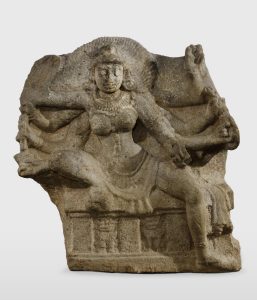

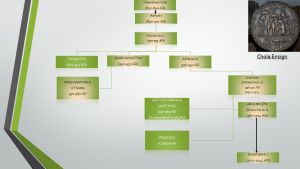
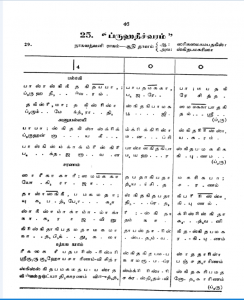
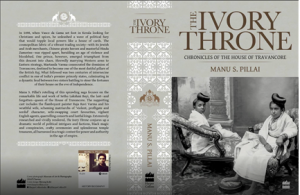
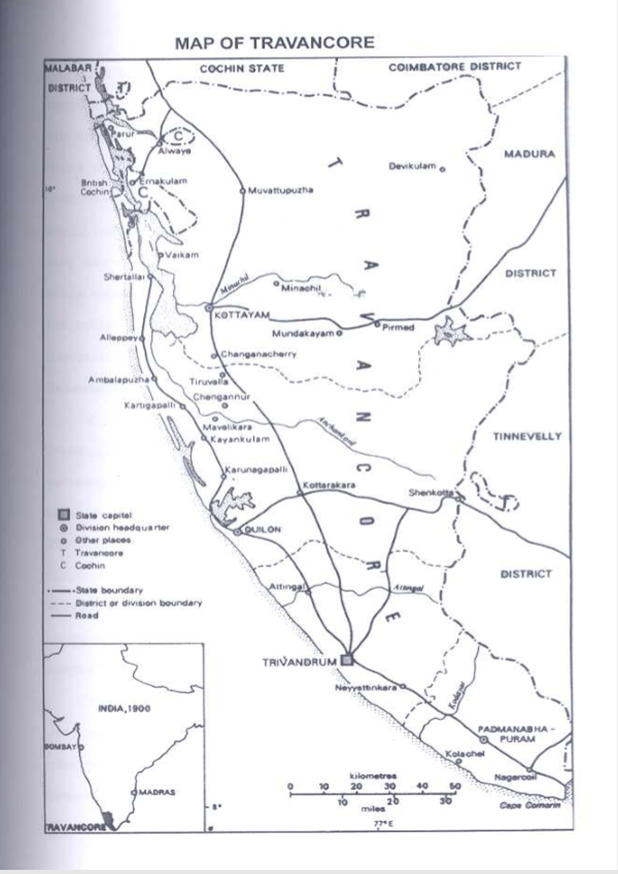
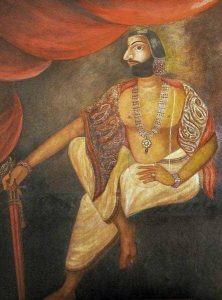

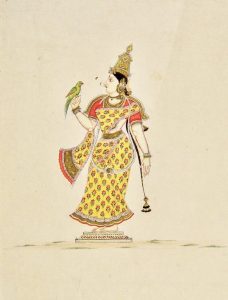
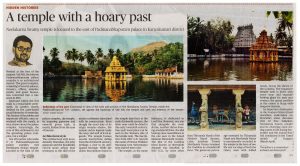

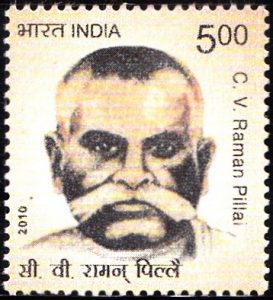

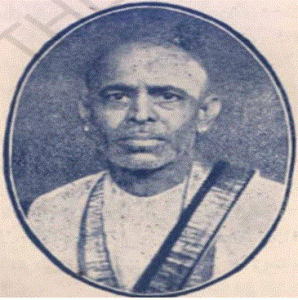
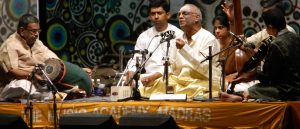

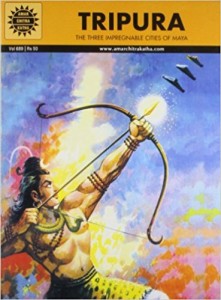
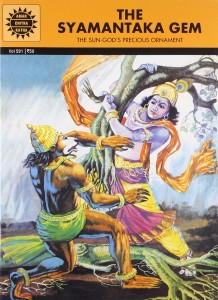 As we embark on this let us go over to what Dr Raghavan has to say on the same context but in a different kriti of Dikshitar namely ‘siddhi vinAyakam anisaM’ in the raga cAmara. Dr V Raghavan in his essay in Tamil narrates how the 68
As we embark on this let us go over to what Dr Raghavan has to say on the same context but in a different kriti of Dikshitar namely ‘siddhi vinAyakam anisaM’ in the raga cAmara. Dr V Raghavan in his essay in Tamil narrates how the 68